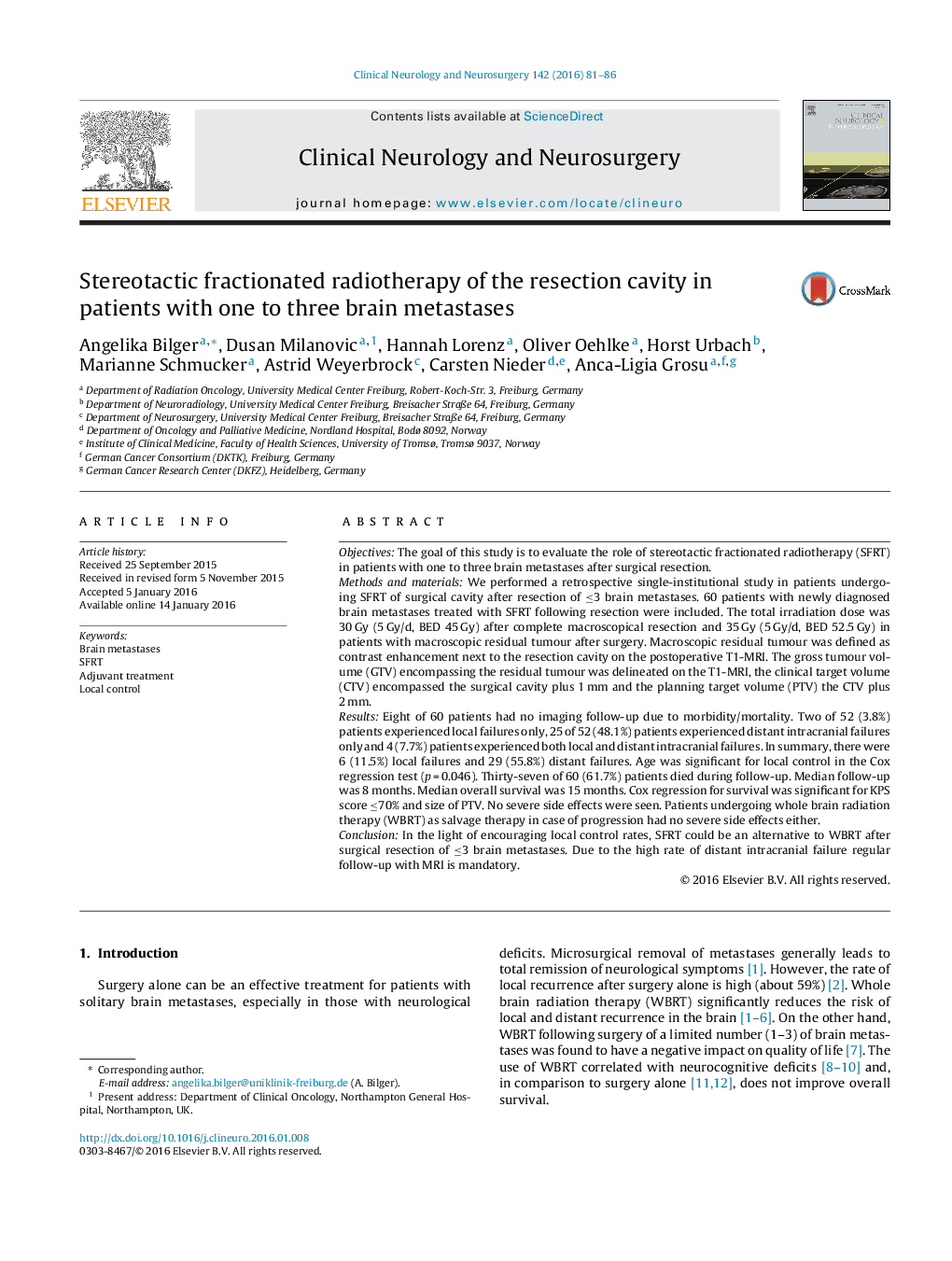| کد مقاله | کد نشریه | سال انتشار | مقاله انگلیسی | نسخه تمام متن |
|---|---|---|---|---|
| 3039555 | 1579680 | 2016 | 6 صفحه PDF | دانلود رایگان |

• Adjuvant SFRT after resection of 1–3 brain metastases shows excellent local control.
• 30–45 Gy were delivered in 6–15 fractions to the resection cavity plus 3 mm margin.
• No treatment related side effects ≥grade 3 were observed.
• KPS score ≤70% and the size of PTV were significant predictors of survival.
• SRS and deferred WBRT remain salvage therapies for distant intracranial relapse.
ObjectivesThe goal of this study is to evaluate the role of stereotactic fractionated radiotherapy (SFRT) in patients with one to three brain metastases after surgical resection.Methods and materialsWe performed a retrospective single-institutional study in patients undergoing SFRT of surgical cavity after resection of ≤3 brain metastases. 60 patients with newly diagnosed brain metastases treated with SFRT following resection were included. The total irradiation dose was 30 Gy (5 Gy/d, BED 45 Gy) after complete macroscopical resection and 35 Gy (5 Gy/d, BED 52.5 Gy) in patients with macroscopic residual tumour after surgery. Macroscopic residual tumour was defined as contrast enhancement next to the resection cavity on the postoperative T1-MRI. The gross tumour volume (GTV) encompassing the residual tumour was delineated on the T1-MRI, the clinical target volume (CTV) encompassed the surgical cavity plus 1 mm and the planning target volume (PTV) the CTV plus 2 mm.ResultsEight of 60 patients had no imaging follow-up due to morbidity/mortality. Two of 52 (3.8%) patients experienced local failures only, 25 of 52 (48.1%) patients experienced distant intracranial failures only and 4 (7.7%) patients experienced both local and distant intracranial failures. In summary, there were 6 (11.5%) local failures and 29 (55.8%) distant failures. Age was significant for local control in the Cox regression test (p = 0.046). Thirty-seven of 60 (61.7%) patients died during follow-up. Median follow-up was 8 months. Median overall survival was 15 months. Cox regression for survival was significant for KPS score ≤70% and size of PTV. No severe side effects were seen. Patients undergoing whole brain radiation therapy (WBRT) as salvage therapy in case of progression had no severe side effects either.ConclusionIn the light of encouraging local control rates, SFRT could be an alternative to WBRT after surgical resection of ≤3 brain metastases. Due to the high rate of distant intracranial failure regular follow-up with MRI is mandatory.
Journal: Clinical Neurology and Neurosurgery - Volume 142, March 2016, Pages 81–86